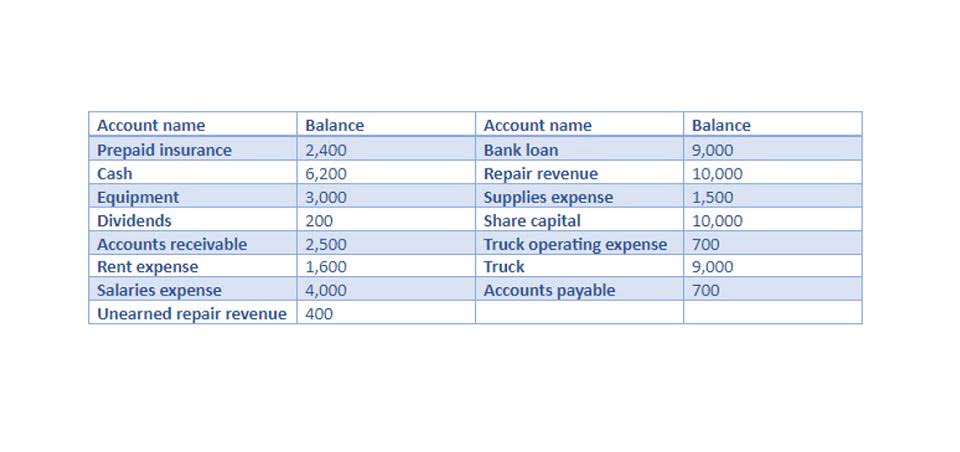
This is where you’ll find the balance of Net Assets that shows the accumulated financial reserves of your organization. So, if an organization has liabilities it expects to pay off within the year, these are classified as current liabilities. Long-term liabilities, as the name implies, are those with due dates further in the future (more than one year away). So another way to think of it is that your Net Assets are the amount of money you’d have left if your organization sold all of its assets and paid off all debts it owes to anyone else. IRS Form 990 is a template for the creation of the Statement of Financial Position as well as a separate Statement of Activities, which is similar to an income statement.
Effective Date of ASU 2016-14
- In addition, donations to museums of art, artifacts, and other valuables often come with restrictions, which can include a prohibition on the sale of the donated assets.
- For best results, we recommend reaching out to nonprofit accountants like the team at Jitasa.
- First, the organization debits the temporarily restricted net assets account, reducing the balance to indicate that the funds are no longer restricted.
- Reporting your net assets allows you to be more transparent with donors and stakeholders about your nonprofit’s financial situation and make more informed decisions about how to allocate available funds at your organization.
- For the past 52 years, Harold Averkamp (CPA, MBA) has worked as an accounting supervisor, manager, consultant, university instructor, and innovator in teaching accounting online.
- Instead, your nonprofit can put these funds toward any of its expenses, whether they’re directly related to your mission or part of your organization’s overhead.
Accurate financial reporting is indispensable for nonprofits, as it ensures transparency and accountability to donors, stakeholders, and regulatory bodies. The process begins what are unrestricted net assets with the preparation of financial statements, which typically include the statement of financial position, statement of activities, and statement of cash flows. These documents provide a comprehensive overview of the organization’s financial health, detailing assets, liabilities, revenues, and expenses. The statement of activities, which details the nonprofit’s revenues and expenses, also reflects the impact of released net assets.
Understanding Unrestricted Net Assets
Incorrect or delayed entries can lead to financial discrepancies, complicating audits and potentially undermining donor trust. Nonprofits often use specialized accounting software, such as QuickBooks Nonprofit or Blackbaud Financial Edge, to streamline this process. These tools offer features tailored to the unique needs of nonprofit accounting, including automated Airbnb Accounting and Bookkeeping journal entries and real-time financial reporting.

Net Assets Released from “With Donor Restrictions”
With more detailed information as to the composition of net assets, different conclusions about these organizations’ financial health would be reached. The breakdown for Org A shows it has spent all its available cash on equipment or its facility and has an accumulated operating deficit of $20,000. Org B’s presentation shows it has planned for financial stability by maintaining operating cash and setting aside reserve funds in addition to investing in some equipment. Showing the net assets in this greater detail would help Org A’s board to understand why the organization has positive net assets but is still struggling to pay the bills on time. The agency uses these funds to pay general expenses or to fund specific purposes of the group.
By leveraging such software, organizations can ensure that their financial records are both accurate and up-to-date, facilitating better decision-making and compliance with accounting standards. The measure of operations excludes net investment return in excess of amounts made available for operations. The reclassification process involves making precise journal entries that reflect the change in the nature of the funds. These entries are not merely administrative tasks; they play a significant role in the financial statements of the organization. By contribution margin accurately recording the release of net assets, nonprofits can provide a clear picture of their financial health and resource allocation.

The disclosure should be qualitative (providing information about how the nonprofit manages its liquid resources) and quantitative (communicating the availability of resources to meet the cash needs). All of these resources are important for your organization to comply with the Generally Accepted Accounting Principles and government regulations for nonprofits. They’re also useful for internal decision-making as they show where your organization stands and what it has to do to work toward financial sustainability and growth. Lastly, when your nonprofit makes information about its net assets publicly available by sharing its financial statements and tax returns, it builds trust with donors and stakeholders that can lead to increased support.

- All organizations need systems in place to record financial transactions and report their activities.
- Fund accounting relies on knowing the purpose of the money received and reporting the organization’s finances based on the purpose.
- Incorrect or delayed entries can lead to financial discrepancies, complicating audits and potentially undermining donor trust.
- Establishing clear policies for the use and replenishment of reserve funds can ensure that they are available when most needed.
- While this calculation is fairly straightforward, determining and applying insights about your net assets to your nonprofit’s unique situation can be challenging.
In addition to reporting restricted and unrestricted net assets separately, it’s important to consider them separately when creating your nonprofit’s annual operating budget. If you only look at your net assets as a whole, you might accidentally overestimate your organization’s spending capabilities or allocate restricted funds toward expenses they weren’t designated for. In addition to financial planning, fostering a culture of transparency and accountability within the organization is vital.

The process begins with recognizing when the conditions tied to temporarily restricted net assets have been met. This recognition is crucial as it triggers the reclassification of these funds from temporarily restricted to unrestricted net assets. For instance, if a donor’s contribution was intended for a project that has now been completed, the funds can be released and reallocated accordingly. Small and midsize nonprofit organizations typically do not have net assets that are restricted permanently, such as endowments, and it is usually not advisable for them to do so. Having an endowment ties up cash that is not accessible to the organization for operations or program delivery. It is far more advisable for small and midsize nonprofits to build working capital cash and to fund an operating reserve before attempting to create an endowment.
Are You Ready To Outsource Your Accounting?
- Understanding how to handle these funds can significantly impact a nonprofit’s operations and reporting accuracy.
- On the balance sheet, the shift from restricted to unrestricted net assets can enhance the organization’s liquidity and financial flexibility.
- For instance, if a donor’s contribution was intended for a project that has now been completed, the funds can be released and reallocated accordingly.
- It distinguishes between unrestricted, temporarily restricted, and permanently restricted net assets, providing insights into how funds are being utilized.
- A well-structured budget should include provisions for unexpected expenses and opportunities, allowing the organization to respond swiftly to new challenges or initiatives.
- It reflects their ability to steer the organization towards its goals while maintaining financial stability.
These agencies use fund accounting to record financial actions and to communicate their financial positions. The statement of activities, similar to an income statement, outlines the organization’s revenues and expenses over a reporting period. It distinguishes between unrestricted, temporarily restricted, and permanently restricted net assets, providing insights into how funds are being utilized. This differentiation is crucial for demonstrating compliance with donor restrictions and for strategic planning. When managing net assets released from restrictions, nonprofits must adhere to specific accounting practices to ensure transparency and accuracy.